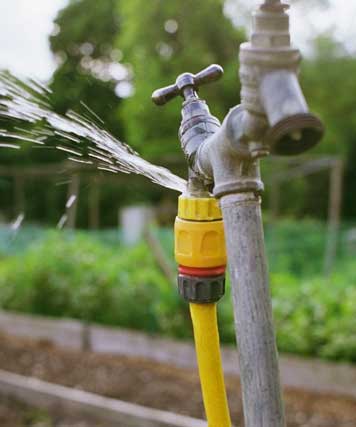6 Ways to Detect Covert Water Line Leaks Effectively
6 Ways to Detect Covert Water Line Leaks Effectively
Blog Article
Right here in the next paragraph you will find a good deal of sound resources relating to Locating water leaks.

Early detection of leaking water lines can alleviate a possible disaster. Some small water leakages might not be visible.
1. Analyze the Water Meter
Every residence has a water meter. Examining it is a proven way that helps you uncover leakages. For beginners, switch off all the water resources. Ensure no one will flush, utilize the tap, shower, run the cleaning maker or dish washer. From there, go to the meter and watch if it will change. Considering that no person is utilizing it, there must be no activities. If it moves, that indicates a fast-moving leak. If you discover no modifications, wait an hour or two and examine back once more. This suggests you might have a slow-moving leakage that might even be underground.
2. Inspect Water Intake
If you identify sudden changes, in spite of your consumption being the very same, it indicates that you have leaks in your plumbing system. An abrupt spike in your expense indicates a fast-moving leakage.
On the other hand, a stable rise each month, even with the very same practices, reveals you have a sluggish leak that's additionally slowly rising. Call a plumber to thoroughly examine your building, particularly if you really feel a warm location on your floor with piping below.
3. Do a Food Coloring Test
30% comes from toilets when it comes to water consumption. Examination to see if they are running correctly. Decrease flecks of food color in the storage tank and also wait 10 minutes. There's a leak in between the container and dish if the color in some way infiltrates your bowl during that time without flushing.
4. Asses Exterior Lines
Do not neglect to examine your exterior water lines also. Needs to water permeate out of the link, you have a loosened rubber gasket. One tiny leakage can throw away tons of water and spike your water costs.
5. Inspect and also Evaluate the Circumstance
Property owners must make it a routine to examine under the sink counters and also also inside closets for any kind of bad odor or mold and mildew development. These two red flags show a leakage so timely interest is required. Doing regular assessments, also bi-annually, can conserve you from a major problem.
Much more importantly, if you know your home is already old, maintain a watchful eye on your heating units, hose pipes, pipes etc. Check for discolorations and also damaging as the majority of pipelines as well as devices have a life span. They will additionally naturally deteriorate as a result of tear and also put on. Do not wait for it to escalate if you presume leaking water lines in your plumbing system. Call a professional plumber today so you don't end up with a terrible mess in your house.
Early detection of dripping water lines can mitigate a prospective calamity. Some tiny water leakages may not be visible. Examining it is a proven method that helps you find leakages. One tiny leak can throw away loads of water and also spike your water costs.
If you suspect dripping water lines in your plumbing system, do not wait for it to escalate.
WARNING SIGNS OF WATER LEAKAGE BEHIND THE WALL
PERSISTENT MUSTY ODORS
As water slowly drips from a leaky pipe inside the wall, flooring and sheetrock stay damp and develop an odor similar to wet cardboard. It generates a musty smell that can help you find hidden leaks.
MOLD IN UNUSUAL AREAS
Mold usually grows in wet areas like kitchens, baths and laundry rooms. If you spot the stuff on walls or baseboards in other rooms of the house, it’s a good indicator of undetected water leaks.
STAINS THAT GROW
When mold thrives around a leaky pipe, it sometimes takes hold on the inside surface of the affected wall. A growing stain on otherwise clean sheetrock is often your sign of a hidden plumbing problem.
PEELING OR BUBBLING WALLPAPER / PAINT
This clue is easy to miss in rooms that don’t get much use. When you see wallpaper separating along seams or paint bubbling or flaking off the wall, blame sheetrock that stays wet because of an undetected leak.
BUCKLED CEILINGS AND STAINED FLOORS
If ceilings or floors in bathrooms, kitchens or laundry areas develop structural problems, don’t rule out constant damp inside the walls. Wet sheetrock can affect adjacent framing, flooring and ceilings.
https://www.servicemasterbyzaba.com/blog/how-to-detect-water-leakage-in-walls/

Do you appreciate more info about Top leak detection hacks? Leave a comment below. We'd be glad to find out your opinion about this content. Hoping that you visit us again in the future. For those who enjoyed our post kindly make sure you remember to pass it around. I take joy in reading our article about Top leak detection hacks.
Got trouble? Ring! Report this page